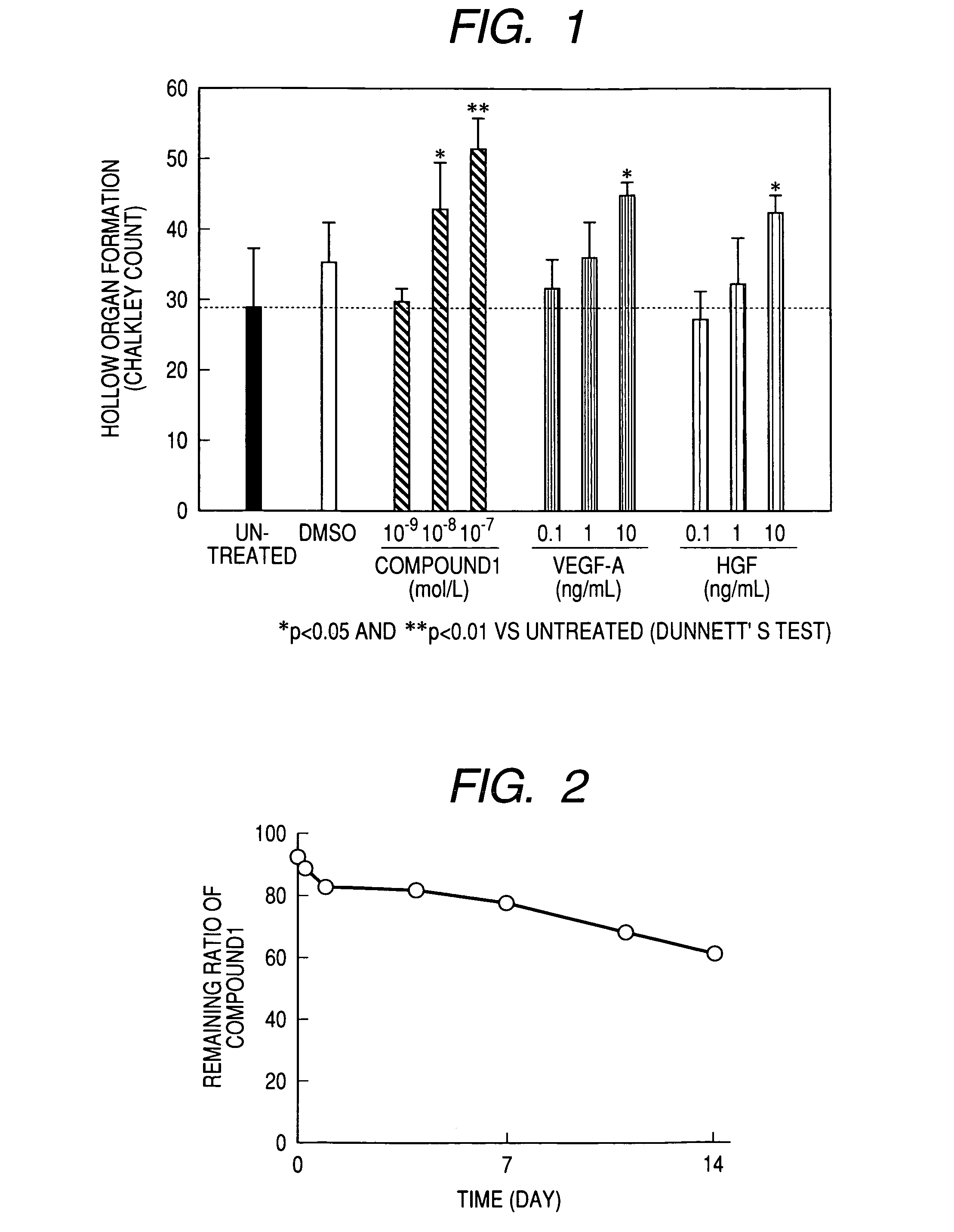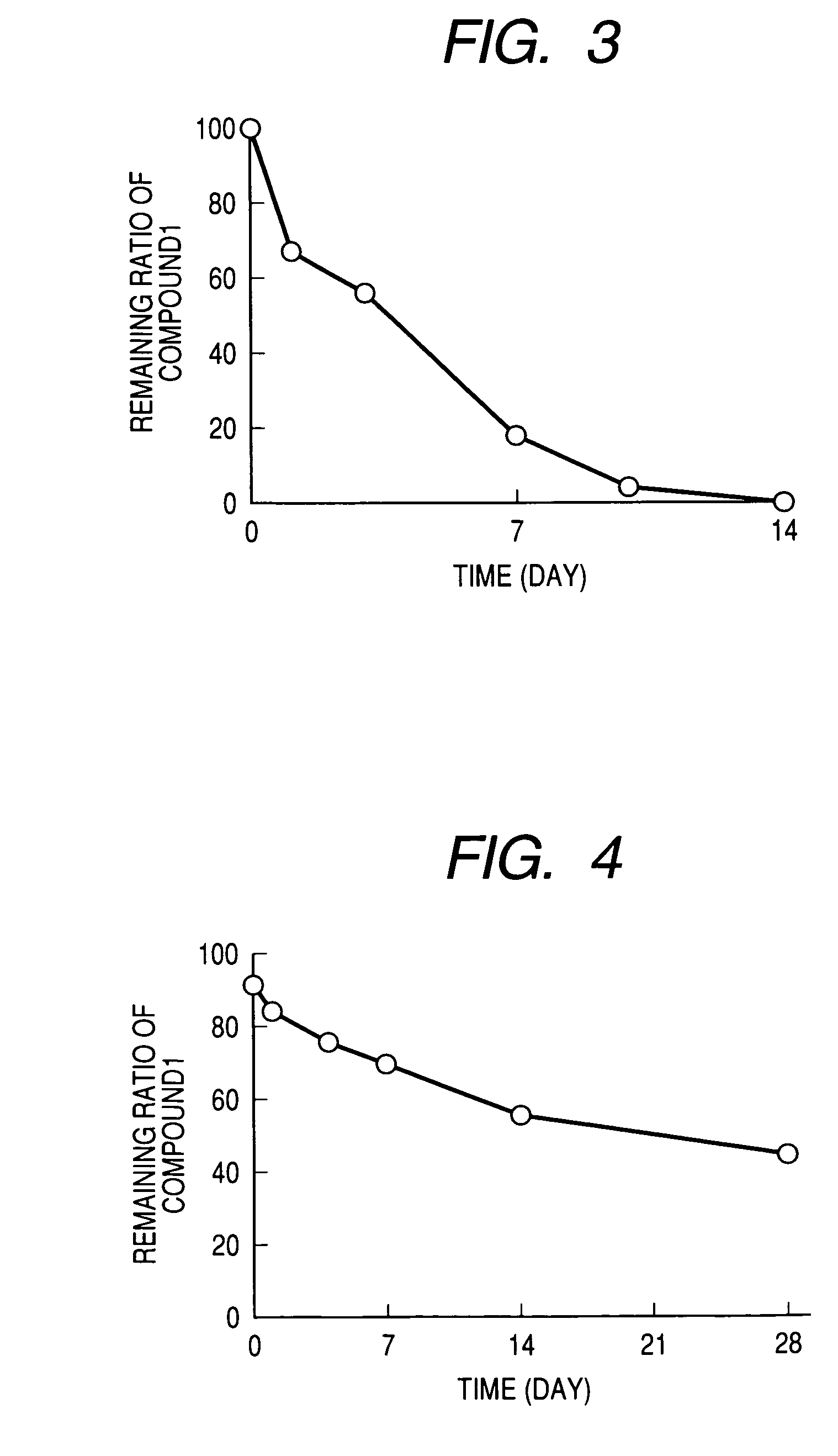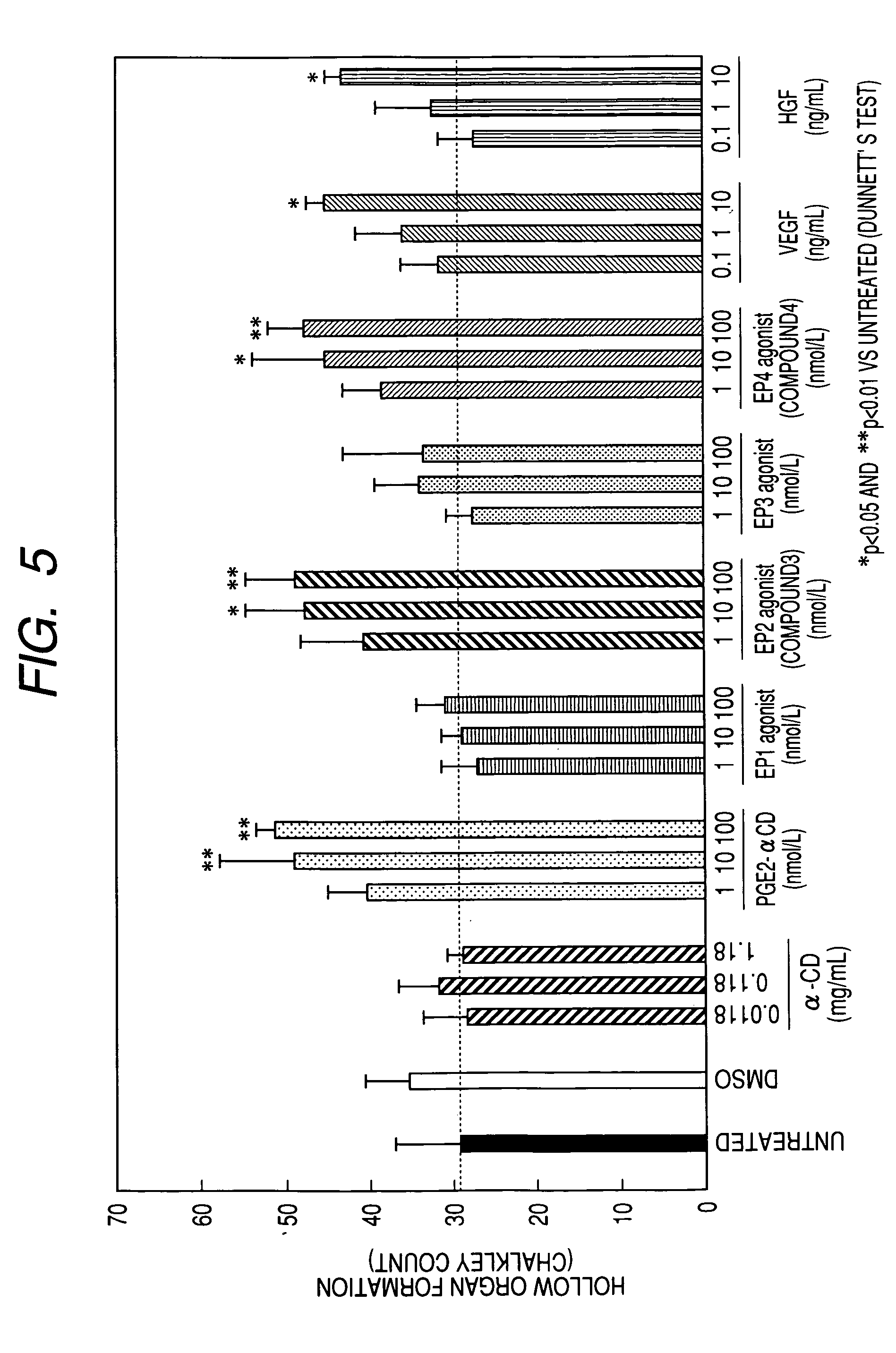Endogenous repair factor production accelerator
a technology of repair factor and accelerator, which is applied in the direction of peptides, drug compositions, metabolic disorders, etc., can solve the problems of inability to carry out revascularization, inability to achieve intravascular treatment (balloon dilation or stent insertion), and unavoidable amputation of legs, etc., and achieves the effect of less side effects
- Summary
- Abstract
- Description
- Claims
- Application Information
AI Technical Summary
Benefits of technology
Problems solved by technology
Method used
Image
Examples
example 1
Measurement of Angiogenesis Acceleration Action (In Vitro)
Test Method:
[0248]An angiogenesis kit (manufactured by Kurabo; constituted from normal human umbilical cord vein vascular endothelial cells and normal human skin fibroblasts) was cultured for 3 hours, and then the culture medium (the medium for angiogenesis use attached to the angiogenesis kit was used as the culture medium and cultured at 37° C. under a moist environment of 5% carbon dioxide-95% air, and a carbon dioxide incubator BNA-121D was used as the incubator) was changed and an agent to be tested was added to each well (0.5 ml / well). The medium exchange was carried out also on the 3rd, 6th and 8th days after commencement of the culturing and the fresh agent to be tested was added. The kind and concentration of the agent to be tested were untreated, solvent (DMSO) 0.1%, Compound 1 10−9, 10−8 and 10−7 mol / l, VEGF-A 0.1, 1 and 10 ng / ml and HGF 0.1, 1 and 10 ng / ml, and the culturing was carried out by using 3 wells for ea...
example 2
Measurement of Endogenous Repair Factor (HGF, VEGF) Protein Producing Action (In Vitro)
Test Method:
[0256]An angiogenesis kit (manufactured by Kurabo; constituted from normal human umbilical cord vein vascular endothelial cells and normal human skin fibroblasts) was cultured for 3 hours, and then the culture medium (the medium for angiogenesis use attached to the angiogenesis kit was used as the culture medium and cultured at 37° C. under a moist environment of 5% carbon dioxide-95% air, and a carbon dioxide incubator BNA-121D was used as the incubator) was changed and an agent to be tested was added to each well (0.5 ml / well). The agent to be tested were solvent (DMSO) 0.1% and Compound 1 10−7 mol / l, and the culturing was carried out by using 3 wells for each. Culture supernatants were collected before commencement of the culturing and 1, 2, 6, 24, 48 and 72 hours after the commencement. HGF and VEGF protein concentrations in the culture supernatants were measured by using an ELISA ...
example 3
Production of Persistent Preparations
Preparation Example 1
[0263]A dichloromethane (1 ml) solution of 100 mg of a polylactic acid-glycolic acid copolymer (hereinafter referred to as “PLGA”) (polylactic acid:glycolic acid=1:1 (mol %), weight average molecular weight 40,000, PLGA5-1, manufactured by Mitsui Kagaku) and Compound 1 (5 mg) was prepared. An 0 / W emulsion was prepared by adding the solution prepared in the above to 300 ml of 0.1% polyvinyl alcohol (Nacalai Tesque) aqueous solution (pH 3.0, adjusted with 1 N hydrochloric acid) which was stirred at 5,000 rpm using TK Robomix (Tokushu Kiki, MARK II 2.5 type), and stirring the mixture at room temperature for 3 minutes. This O / W emulsion was stirred at room temperature for 2 hours to evaporate dichioromethane, and the oil phase was solidified and then centrifuged at 3,000 rpm for 10 minutes using a centrifuge (Hitachi, O5PR-22). The supernatant was discarded, and the residue was dispersed in distilled water for injection (35 ml) a...
PUM
 Login to View More
Login to View More Abstract
Description
Claims
Application Information
 Login to View More
Login to View More - R&D
- Intellectual Property
- Life Sciences
- Materials
- Tech Scout
- Unparalleled Data Quality
- Higher Quality Content
- 60% Fewer Hallucinations
Browse by: Latest US Patents, China's latest patents, Technical Efficacy Thesaurus, Application Domain, Technology Topic, Popular Technical Reports.
© 2025 PatSnap. All rights reserved.Legal|Privacy policy|Modern Slavery Act Transparency Statement|Sitemap|About US| Contact US: help@patsnap.com



